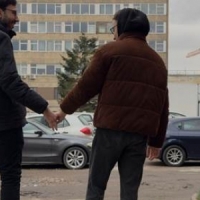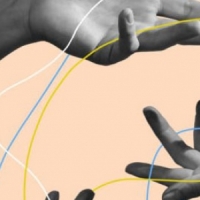United Nations Ukraine (2014). Analytical research on women’s participation in the labour force in Ukraine (2014) - United Nations in Ukraine. [online] Available at: http://un.org.ua/en/publications-and-reports/gender-and-gender-based-violence/4493-analytical-research-on-women-s-participation-in-the-labour-force-in-ukraine-2014 [Accessed 12 Sep. 2019]
This report offers a thorough analysis of women’s employment rate and employment conditions in Ukraine. In 2011, the employment rate of Ukrainian women was 57.5 percent, which was rather close to the EU-average on 58.5 percent and exceeded most South and Eastern European countries. However, the female employment rate in Ukraine is growing at a slower pace than in the EU, on average. During 2000-2011, women’s employment rates increased by 5-7 percent points in most EU-countries, while the rates in Ukraine grew by merely 2.4 percent points. It is emphasized that one of the reasons why Ukraine is slower than the rest of Europe is the difference in retirement age. In Ukraine before 2011, the retirement age was 55 for women and 60 for men, whereas the European retirement age is about 65, regardless of sex. The retirement age is now gradually increasing in Ukraine (60 years in 2021, regardless of sex). This could potentially increase female employment rates and strengthen women’s role in shaping the labour force. The pension status is the most dominant reason for labour market inactivity - a bit less than 50 percent for both genders. One would expect a considerable gender gap due to women’s lower retirement age, yet this is not the case. An explanation to this curiosity may be that early pensions due to illness and attrition are more prevalent among men. Besides retirement, men are often unemployed due to education. According to this study, the most dominant reason for women’s inactivity is a preference of home responsibilities. This applies to 45.7 percent of all unemployed women, and amongst unemployed women under the age of 40, family responsibilities are the main reason for unemployment in 79.9-85.5 percent of cases. Considering that a large share of housewives has a higher education, a large share of skilled workers are taken out of the labour force - be it voluntarily or involuntarily. Based on the economic crisis and other political developments in the 00’s in Ukraine, the report marks that male employment is more sensitive to economic cycle impacts and state labour market policy, for instance the 2005 presidential programme on creating 1 million new jobs annually. However, women were the first to be affected by the financial crisis, as the number of unemployed women started rising earlier and more intensely than that of men. In 2009, mainly male unemployment grew, but women were more vulnerable to dismissal at the time of economic downturn in 2008, and in the years after the crisis, female unemployment reduced at a slower pace than male unemployment. In Ukraine, the average wage for males exceeds that of women by more than one-fourth. According to the State Statistics Service of Ukraine, in all aggregate economic activities there is an economic gender gap reaching up to 30 percent. On average, the EU wage gap in 2011 was on 17.2 percent. The wage gap in Ukraine is partially due to the vertical employment segregation, where the more well-paid and powerful sectors are considered male territory, and the low-paid and assisting sectors are considered female. Women in management are few. Furthermore, the number of female managers is more prevalent in small-scale businesses. Besides the high level of cultural subconscious gender stereotyping, a lot of deliberate discrimination also takes place. Based on the generated knowledge, the report is rounded off with an array of policy recommendations that are worth a read.
Kostiuchenko, T., Martsenyuk T., Shurenkova, A. (2017). Gender-based Discrimination in Ukrainian Enterprises: Comparison of the Views of Experts, Top-managers and Personnel
Based on analysis of surveys and interviews, this article compares employers, employees and experts’ perceptions of gender-based discrimination in Ukrainian enterprises. Firstly, the study shows that gender stereotypes are prevalent and a source of discrimination in the workplace, both on the part of the employer and the employee. Women may be denied a job because of stereotypes regarding women’s skills and assumed wishes of motherhood. Yet women may also distance themselves from certain jobs because of disbelief in their own skills or for work-life-balance reasons. Secondly, the results show that there is a vertical gender segregation - which gives men better access to top management positions - and a horizontal gender segregation, which frames certain business areas as traditionally female or male. Women in top positions do mostly not have access to the networking fora that male leaders are naturally included in. Furthermore, women in leadership positions are expected to live up to male ideals, thereby often failing to improve conditions for other women in the industry. There are certain Ukrainian laws in place to ensure equal rights despite origin, social or financial status, race, nationality, gender, language, political views, religious beliefs, occupation and place of residence or other circumstances. Yet this is not common knowledge amongst Ukrainian employees and the violation of these rights do not face sanctions. Amongst top managers, only 59 percent (64 percent of women and 53 percent of men) reported having solid knowledge on the Ukrainian regulations regarding fair recruitment.
UNDP (2017). Women and Men in Leadership Positions in Ukraine: A Statistical Analysis of Business Registration Open Data
This report presents the trends of men’s and women’s leadership in officially registered institutions, organizations and enterprises. It investigates the effects of sectors, activities, regions and settlement types. According to the State Statistics Service data, 44 percent of women and 31 percent of men aged 15-70 are economically inactive. Overall, men hold significantly more leadership and management positions than women. Of all organization managers and entrepreneurs, 60 percent are men. In the field of individual entrepreneurship in Ukraine the gender gap is smaller, as 46 percent are women. The male dominance in management is particularly visible in sectors such as the construction sector, the energy sector, the transport sector, the agricultural sector, etc. In some sectors, women hold more management positions than men. Women occupy around 90 percent of management positions within beauty- and hairdressing, care work and primary education. Also, food- and textile-businesses are rather often lead by women. The percentage of female managers in legal entities in Kyiv is 4 percentage points lower than in other regions on average. Organization management in big cities is more gender-balanced, but mainly because men more often manage more “female” sectors in the big cities. The percentage of female independent entrepreneurs is greatest in cities that are bigger than villages, yet with a population under 100,000 people. As for the rest of management positions, the smaller the settlement, the more female managers.
Chepurko, G. (2010). Gender Equality in the Labour Market in Ukraine, International Labour Organisation
Besides giving a good overview of labour market politics regarding gender and social dialogue in Ukrainian enterprises, this report explores the potential for mitigating gender inequality through collective bargaining. Social dialogue and negotiations in Ukraine are conducted between trade unions, employers’ organizations and public authorities with the aim of reconciling workers’ interests with employers’ interest. These three actors are increasingly trying to promote equality for women and men in the workplace. However, trade unions, employer’s organizations and government officials lack awareness of gender issues and practical experience with implementing non-discriminatory policies and gender mainstreaming are insufficient. Chepurko argues that The Cabinet of Ministers must direct its activities towards improving gender legislation. In general, there is little monitoring of gender discrimination in the Ukrainian labour market. According to a survey, the investigation of discrimination complaints rarely takes place. Trade union staff is educated in practicing gender sensitivity in collective bargaining, yet more than 80 percent of the trade unionists involved in collective bargaining are men.
Libanova, E., Cymbal, A., Lisogor, L. and Larosh, L. (2016). Labour market transitions of young women and men in Ukraine. Results of the 2013 and 2015 school-to-work transition surveys. Work4Youth Publication No. 41. International Labour Organization
In this report, ILO gives an overview of Ukrainian economy and extensive quantitative data on the characteristics of Ukrainian youth and youth employment. As a recurring element in the statistical analysis, the report points to several gender differences in the transition from school to work in Ukraine (2013-2015). The survey findings show that the chances of completing a labour market transition is better for men (47.3 percent) than for women (35.1 percent). Yet finding employment after finishing an education takes 3.6 months for women and 6.6 months for men, on average. 49.8 percent of women have completed a higher education. As the same is true for only 38.3 percent of men, women are more highly educated than men in Ukraine. On the other hand, vocational education is completed by 29.8 percent of men and only 17.5 percent of women. The average wage of a young employee is 2,767 UAH, though young men earn significantly more than young women (men: 3,087 UAH, women: 2,343 UAH). Self-employed male workers earn on average 3,876 UAH, while self-employed women earn an average of 1,396 UAH. Young women are often employed in secure employment such as state-owned enterprises, whereas self-employment and private sector jobs are more prevalent amongst young men. The demographics of unemployed men are very different from those of unemployed women. Of unemployed women, 58.5 percent have tertiary education and 24.6 percent have vocational training. 34.9 percent of unemployed men have tertiary education and 47.3 person have vocational training. Furthermore, young women are more often employed as unpaid family workers. In 2015, the main reason given for leaving an education among young men was a lack of motivation to study (28.5 percent) and a wish to start working (22.8 percent). As for young women, 27.3 percent stopped their education for economic reasons. Also, 10.5 percent of women (and 5.5 percent of men) interrupted their studies to start a family. In 2013, an astonishing 31.3 percent of women stopped their education in pursuit of starting a family. Overall, a bigger proportion of women than men marry when they are very young. 29.2 percent of young women and 6.9 percent of young men ages 15-19 are married. In rural areas, early marriages are more common than in the cities for both men and women. The activity rates for women in Ukraine are traditionally lower than men. This is in part because women’s education is longer, but also because women are made responsible for the majority of household burdens in a labour market that doesn’t make employment and mothering easy to combine. The report states that men have easier access to transport cost allowance, more frequent overtime pay and a higher level of work security. Young women have easier access to child care facilities and services, and they benefit from paid sick leave, maternity leave and educational courses more often than men. Dependency on social state benefits is thus more common amongst women (7.1 percent).
ILO (2016). Employment needs assessment and employability of internally displaced persons in Ukraine: summary of survey findings and recommendations. [online]. Available at: https://www.ilo.org/budapest/what-we-do/publications/WCMS_457535/lang--en/index.htm [Accessed 12 Sep. 2019]
According to this study conducted by ILO, the majority of unemployed internally displaced people are women (68 percent), less than 45 years old (74 percent), with a college (22.3 percent) or university diploma (46.3 percent). Most also have employment experience before their displacement (81.8 percent) and computer-skills. Statistics show that amongst internally displaced people, long-term unemployment of more than 6 months is higher amongst women, elderly and highly educated workers with working experience. Low-skilled male workers are thus better off when looking for employment. A higher share of women and older workers having flexible work schedules and temporary, limited-duration jobs. According to the report, almost 40 percent of women mark family and care responsibilities as reasons for their inactivity. Less than 4 percent of men mark this as reasons for their unemployment. Based on this, ILO recommends offering free or affordable child care in order to mobilize more women in job-seeking.
Hrytsenko, H. (2018). “Invisible battalion”: How Ukrainian women secured the right to fight on a par with men [online] Available at: https://www.opendemocracy.net/en/odr/invisible-battalion-ukraine/ [Accessed 12 Sep. 2019]
Women in civil society have played a big role in the armed resistance since the beginning of the war in 2014. About 8 percent of the Ukrainian Armed Forces are now women. Yet only a tenth of these women have risen to officer rank and none of them have become generals. Though there are many women in the army, the state has been slow to ensure their rights, legally and practically. In order to draw attention to the importance of women in warfare, The Invisible Battalion project was founded by female soldiers with support from the Ukrainian Women’s Fund and UN Women. The project aims at improving gender equality in the army through lobbying with authorities and working with the public. Up until 2017, the legal framework established by Ukraine’s Ministry of Defence was very outdated and based on Soviet perceptions of protecting women. Women were not allowed in military professions except assisting roles such as nurse, chef or field banya directors. Women serving in the army were thus registered as accountants or not officially registered at all, giving them less benefits, lower salaries and less recognition. Women were infrastructurally invisible, as they were not provided with uniforms, footwear, feminine sanitary protection or access to gynaecological services. Furthermore, women in the military have dealt and still deal with great stigma from male colleagues and society as such. For instance, they are often accused of neglectful behaviour towards their families. Though bill no. 6109 that prohibited women from 450 professions was revoked in 2017, women are still not given access to secondary and higher military education, and a female-friendly infrastructure at the front is also not well established, calling for more legislative and practical action towards gender equality.
Heinrich Böll Stiftung Kyiv. (2019). Women and Men in the Ukrainian Energy Sector: Equal Rights and Opportunities or a Sector of Discrimination? [online] Available at: https://ua.boell.org/en/2019/07/22/women-and-men-ukrainian-energy-sector-equal-rights-and-opportunities-or-sector [Accessed 11 Sep. 2019]
This article comprehensively presents the results of a study conducted in 2018/2019 in the Ukrainian Energy Sector. The study was conducted by the Institute for Economics and Forecasting of the National Academy of Sciences of Ukraine, supported by the Heinrich Böll Foundation Kyiv, Women’s Energy Club of Ukraine and the Government Commissioner for Gender Policy. The study shows that there is a severe gender gap in the energy sector. Internationally, women possess only one fifth of jobs in the energy sector, and in 99 percent of cases, senior management positions are held by men. In Ukraine, the immense gap exists due to many factors. According to the survey, women are three times less likely to want a degree in engineering than men. Women in the energy sector also face discrimination to a higher extent. In the energy sector, 2 percent of men have been discriminated against based on their gender. This goes for 19 percent of women. One third of the survey participants expressed that they cannot get uniforms that fit, and 10 percent complain about the lack of separate dressing rooms for men and women. Besides the gap in education and general access to this field, family structures are part of the challenge. Maternity leave and sick leave are a responsibility that rests primarily on women, whereas men work overtime more often. The biggest wage gaps in the Ukrainian energy sector are observed in the mining industry, where women by law are forbidden to have certain functions in the workplace. In the field of renewable energy, a lower level of gender inequality has been observed.
British Council (2018). Gender Equality and Empowerment in the Creative and Cultural Industries: Report for Armenia, Azerbaijan, Georgia and Ukraine
In this report on the so called ‘Eastern partnership region’, the British Council maps out the gender gap in the creative and cultural industries. The report is based on a study including quantitative data, fieldwork and several interviews. The report contains worth-to-read quotes from the interviews and interesting methodological considerations on investigating the politicized theme of gender in post-Soviet countries. In the Ukrainian cultural and creative industries, architecture, IT, television, commercial filmmaking and performing arts are mostly male-dominated. Museums, galleries, libraries, documentary photography and publishing are female-dominated. Design, advertisement and marketing are amongst the more gender-balanced areas. Technical and better-paid sectors are predominantly occupied by men, including leadership positions, and the field study shows a significant wage gap between men and women in the creative industries. When women enter the creative and cultural field, the study shows that women tend to undervalue their worth which makes them prone to accepting low salaries. Furthermore, they seek flexible work in order to simultaneously manage childcare and household chores. Men, on the other hand, often compromise their wish for a creative work life in order to earn more money and provide for their families.
Dutchak, O. (2018). Devaluation of Female Labor and the Retreat of the State. Austerity, Gender Inequality and Feminism after the Crisis in Ukraine. Rosa Luxemburg Stiftung
As a response to the economic decline in the years after Maidan, the government introduced more neoliberal policies by cancelling fuel subsidies, cutting social costs and increasing the retirement age. The socioeconomic costs for women of these initiatives have not been assessed, and Dutchak argues that existing mainstream discourses on gender inequality generally fails to address structural problems. This means that fundamental structural changes are not the most visible aim of feminist initiatives. Dutchak addresses the discrepancy between façade equality and the real situation of women and women’s wellbeing in Ukraine after Maidan and reviews existing legislation and implementation of gender inequality initiatives. She further documents how the reproductive labour of women is continuously devaluated and made more difficult, while their access to productive labour is also further complicated by austerity. Finally, she discusses mainstream and leftist Ukrainian feminism and the possibilities for provoking structural change through leftist feminism.



















